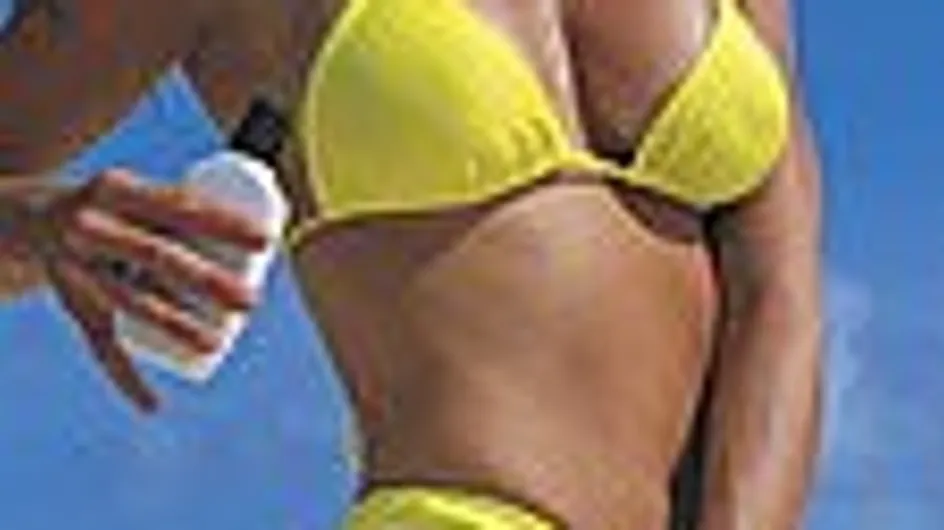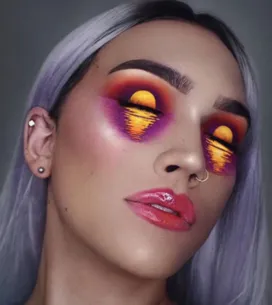Sunlight gives you a warm feeling and a healthy glow which is great for morale but can be dangerous for your skin.
It's essential to protect yourself from UVA, UVB and infrared rays with sunscreen or sun block.
The choice of sunscreen is vast, so here’s some information to help you make an informed choice and choose the right one for you.
The sun
Sunrays are composed of UV (ultra-violet) light which is not visible to the naked eye. UVB rays are stopped by filtered glass, UVA rays can penetrate glass, and infrared rays diffuse heat..
- UVB rays act on the epidermis which is the surface of the skin. They are essential for our Vitamin D intake which is necessary for growth, and also help you get a tan, but they cause sunburn, which can lead to cell mutation and more serious consequences, including skin cancer.
- UVA rays penetrate the dermis (the deep layer of the skin). They give you an instant but temporary tan, but they generate free radicals that provoke the transformation of cells and support fibres, which causes ageing.
- Infrared rays go down to the hypodermis, the deepest layer of the skin. They provide the pleasant sensation of heat but can cause skin to dry out.
Sunlight
The quality of the sun's rays varies according to latitude, season, cloud coverage, altitude, pollution and time of day.
Sunshine is the conjunction of direct rays, rays diffused in the atmosphere and rays refected off the ground (snow reflects 80%, sand 20% and water 30%).
Before choosing your cream, you need to consider the conditions you're going to be exposed to. These will differ according to your location and latitude.
At high altitude and in the tropics, where UV rays are vertical, maximum protection will be required.
How do you protect yourself?
Several factors need to be taken into account. The first is your skin type (referred to as phototype).
There are 4 phototypes and they depend on hair colour, skin colour and ability to tan. The lighter your skin, the more protection you should use.
Phototypes I and II - people who have a milky complexion and/or redheads, who burn without tanning, and fair skinned people (with Nordic colouring) who tan lightly.
Phototype III - people with medium skin and olive complexions who tan gradually and sometimes burn.
Phototype IV - people with dark skin that is more resistant, who tan without burning.
Which suncream?
Choose a cream that protects against UVB rays in the short term, and a cream that prevents premature ageing and reduces the risk of cancer by protecting against UVA rays in the long term.
Which protection?
Sunscreen has an SPF (sun protection factor) number which indicates the amount of exposure your skin can handle from UVB rays before it burns.
Dermatologists recommend using an SPF of at least 15 for all skin types (and there has been a lot of debate as to the point of using suncreams with an SPF of less than 15). Here’s an idea of the level of protection you should use for your skin type.
Phototypes I and II - SPF 25
Phototypes III - SPF 15
Phototypes IV - SPF 15
However this is the minimum. Use higher protection if you are particularly sensitive, especially for children.
Which type?
It’s best to use a liquid cream on your face and milks or sprays on your body (don’t use oils because their texture doesn't allow important filters to be incorporated).
Our advice: Very high SPF products are sometimes very thick, which can be unpleasant, difficult to apply and leave white marks. Use a lower SPF sunscreen that's easier to apply, and always apply liberally.
How often do you need to reapply sunscreen?
You need to be sure that you tan gradually and safely. Avoid exposure to the sun at the hottest times of the day (between 12 and 4pm), and reapply sunscreen every 2 hours.
What you need for...
Mountains. High SPF is essential for skiers. The reflection of the sun on the snow is very strong. Protect your eyes with snow goggles or specially designed sunglasses (which are also ideal for mountain hikers in the summer).
Tropics. If you're on the coast and on fine white sand, use a very high SPF sunscreen at the beginning of your trip. When you start to tan, reduce the factor gradually, but remain careful and don’t go below 15 because the glare of the sun is strong on the water and sand, even under a parasol.
European coast. Maximum protection is needed from the sun, wind and glare off water and sand. Start with a SPF of around 40 for the face and 30 for the body. Once you are tanned you can lower the factor for the rest of your trip.
In the desert. Even if you cover your body and face with a hat, it won't stop you from burning. Apply 40+ SPF on your face and don’t forget to protect your hands and forearms with SPF 30+.
Everyday. Even if you're just out and about in the sun, catching a few rays on a patio, in a pub garden or sat on a park bench in spring, don't forget your cream. The sun can be strong, even in the city. SPF 15 should be enough for your face and neckline.
Keep a tube of suncream in your bag in case you stay out in the sun for several hours. Get into the habit of applying suncream every time you're outside or in your garden.
Even if you're already tanned. It doesn't mean you don't have to take care! Low protection should still be used for the face and body, especially if you're on the coast with the sun and wind to contend with.













